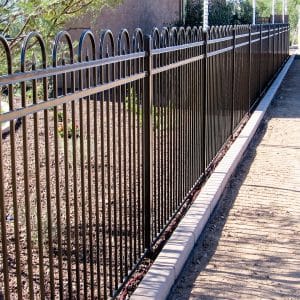Welcome to the Logan Fence Company blog, where we understand that proper fence maintenance is essential to keep your investment looking great and standing strong, especially during the harsh winter months. In this informative guide, we’ll walk you through the essential steps for winterizing your fencing to ensure it withstands the cold, snow, and ice while maintaining its beauty and functionality.
Winter can be tough on your fence, but with the right care, you can protect its longevity and appearance. This guide will provide you with the knowledge and steps necessary to winterize your fence effectively.
Contents
- 1 Why Winterizing Your Fence Matters
- 2 1. Clean and Inspect Your Fence
- 3 2. Make Necessary Repairs
- 4 3. Apply a Protective Finish
- 5 4. Trim Surrounding Vegetation
- 6 5. Snow and Ice Management
- 7 6. Consider Temporary Barriers
- 8 FAQs About Winterizing Your Fence
- 8.1 Is winterizing a fence necessary in all climates?
- 8.2 Can I winterize my fence myself, or should I hire a professional?
- 8.3 What materials are best for winter-resistant fences?
- 8.4 How often should I inspect and maintain my fence during winter?
- 8.5 Are there any special considerations for pool fences in winter?
- 9 Conclusion: Protecting Your Investment
Why Winterizing Your Fence Matters
Winterizing your fence is crucial because cold temperatures, snow, and ice can lead to damage and deterioration. Proper maintenance ensures your fence remains functional and attractive throughout the winter.
1. Clean and Inspect Your Fence
Start by thoroughly cleaning your fence to remove dirt, debris, and mold that can worsen during winter. Inspect the entire fence for signs of damage, rot, or loose components.
2. Make Necessary Repairs
Address any issues you discovered during the inspection promptly. Replace damaged boards, tighten loose screws, and reinforce weak areas. This prevents further deterioration.
3. Apply a Protective Finish
Applying a protective finish, such as a weather-resistant stain or sealant, helps shield your fence from moisture and the freezing-thawing cycle. It also enhances its appearance.
4. Trim Surrounding Vegetation
Trim any branches or vegetation that could fall on your fence due to heavy snow or ice accumulation. This prevents potential damage.
5. Snow and Ice Management
Clear snow and ice from your fence to prevent excess weight and stress. Be gentle to avoid causing damage. Avoid using salt or chemicals that could harm the wood or finish.
6. Consider Temporary Barriers
If you anticipate heavy snowdrifts or falling ice, consider installing temporary barriers, such as snow fences or burlap wraps, to protect your fence.
FAQs About Winterizing Your Fence
Is winterizing a fence necessary in all climates?
While winterizing is crucial in areas with cold winters, it’s less necessary in milder climates. However, routine maintenance remains essential everywhere.
Can I winterize my fence myself, or should I hire a professional?
You can perform many winterization tasks yourself, but if you’re unsure or if extensive repairs are needed, it’s best to consult a professional.
What materials are best for winter-resistant fences?
Cedar, vinyl, and metal are excellent choices for winter-resistant fences due to their durability and resistance to moisture.
How often should I inspect and maintain my fence during winter?
Perform regular checks after storms and heavy snowfall to ensure your fence remains in good condition.
Are there any special considerations for pool fences in winter?
Pool fences should be kept in excellent condition throughout the winter to prevent unauthorized access. Ensure gates are secure and locks function correctly.
Conclusion: Protecting Your Investment
Winterizing your fence is an essential part of maintaining its longevity and functionality. Logan Fence Company is here to help you ensure your fence remains in great shape year-round. If you have questions or need assistance, don’t hesitate to contact us. Let’s keep your fence looking great and standing strong.




